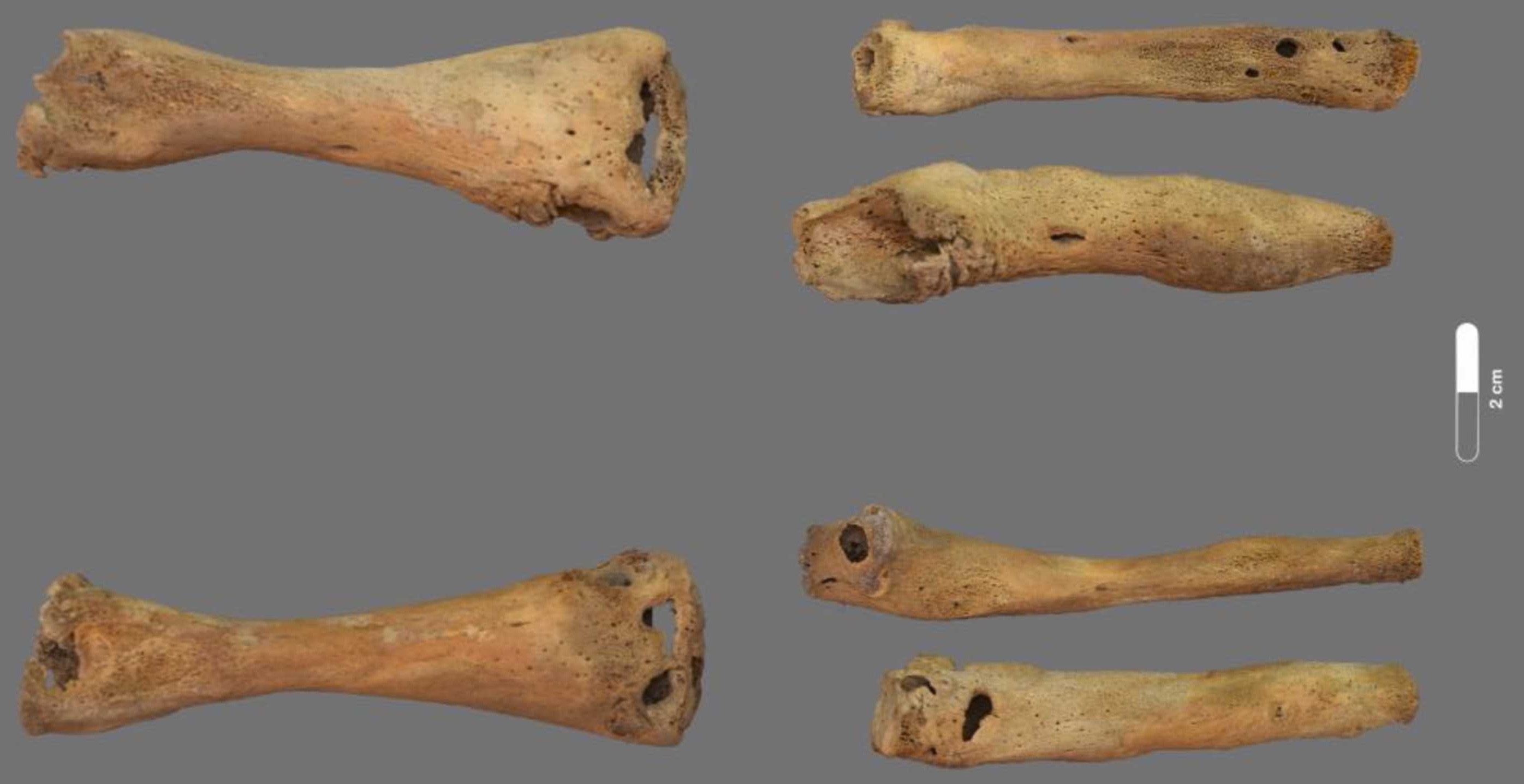Latin America
Related: About this forum16th-Century Skeletons of Children Infected With Smallpox Discovered in Peru
The toddlers’ remains were buried around the beginning of the Spanish conquest of South America
Sonja Anderson
Daily Correspondent
June 26, 2024
Researchers in Peru have concluded that two toddlers buried in the 16th century were victims of smallpox—specifically, a rare bone infection caused by the smallpox virus. The children died during the Europeans’ early colonization of South America, and their story has shed new light on disease outbreaks in the region.
. . .
The graves provide new insights into colonial influence in the area. For instance, Indigenous individuals were buried with Christian crosses and European glass beads, suggesting attempts at religious conversion.
As historians well know, European colonists brought much more than beads and Christianity to South America. They also carried diseases previously unknown to local communities. One of those was smallpox, a highly contagious sickness that caused millions of deaths over thousands of years before its eradication.
“Smallpox and other novel infectious diseases affected the most vulnerable segments of the Andean north coast population,” write the researchers. Smallpox probably traveled from Europe to Peru with conquistador Francisco Pizarro in the 1530s. By 1620, infectious disease had wiped out over 70 percent of the Indigenous occupants of Peru’s northern coast.
. . .

The skeletons are indicative of a smallpox outbreak on Peru's northern coast. Khrystyne Tschinkel, John Verano, Gabriel Prieto / International Journal of Paleopathology
More:
https://www.smithsonianmag.com/smart-news/these-peruvian-indigenous-childrens-bones-were-infected-by-european-smallpox-archaeologists-find-180984573/
Judi Lynn
(164,039 posts)The massive Inca Empire was brought to its knees by less than 200 Spanish conquistadors, who killed tens of thousands of Incan warriors.
Oct 26, 2021 • By Andria Pressel, MLitt in Strategic Studies w/ Military History Concentration
. . .
The Fall of the Inca Empire

The Inca Empire was consolidated by Topa Inca Yupanqui (r. 1471-93) and his successor, Huayna Capac (r.1493-1525), in the 15th and 16th centuries. Through diplomacy, trade agreements, and battle, they overcame the warring chiefdoms and pulled together over 12 million diverse peoples across some 690,000 square miles, nearly quadruple their original territory. In addition, the Inca Empire built over 1,500 state edifices and nearly 15,535 miles of state roads to connect and protect its people. Even before Christopher Columbus arrived in the New World in 1492, the Incas possessed the largest empire in the Americas.
The war started with the siege of Cuzco in 1536, where Manco Inca’s massive forces somehow failed to oust the handful of Spanish conquistadors from the city. The Incan army retreated to the fortress of Ollantaytambo, which served as a base to launch guerrilla attacks against Pizarro and other Spanish columns trickling into Peru. However, Manco Inca was forced to continue retreating to the mountain city of Vilcabamba, which Gonzalo Pizarro sacked in 1539. Manco Inca’s murder in 1544 ended the bulk of Spanish-Inca conflict, though pockets of resistance continued for decades more.

Francisco Pizarro and the 168 members of his original company largely consisted of men seeking to escape Spain’s rigid social hierarchy. They included the impoverished, illiterate, illegitimate, title-less, or all of the above. Other than marrying up, successful military campaigns in the New World offered the only way for these men to better their status. Thus, it became common practice for these wealth-seeking entrepreneurs to sail to the New World and join forces to pursue their common goal: to strip wealth from native populations. Far from being professional soldiers, most started as lower-class laborers. A man’s share of the booty was directly proportionate to the equipment he invested, be it weapons, armor, or a horse.
In 1532, Pizarro was 54 years old with three decades of fighting experience under his belt in the Americas. He was accompanied by a number of other noteworthy conquistadors who made names for themselves, such as Hernando de Soto and Diego de Almagro. But even with a handful of battle-hardened leaders, how did this company of opportunistic, unprofessional, armed entrepreneurs defeat the Incan army?
Weaponry: A Dire Disadvantage
. . .
However, Incan weaponry was not well-suited for fighting Spanish steel and guns. Indeed, the conquistadors were armed with the most cutting-edge weapons technology in the world. Not only did Spanish weapons cut through Incan armor like paper, but conquistador metal armor made Incan weapons almost entirely ineffective.
. . .

More:
https://www.thecollector.com/inca-empire-conquistadors/
no_hypocrisy
(53,984 posts)Long story short: Pizarro captured the King of the Incas and put him in a prison that the Spanish warriors built.
The King made a deal with Pizarro: he would fill the prison with gold if he were released. Pizarro accepted. The gold filled the large room from ceiling to floor. And Pizarro killed him anyway.
Judi Lynn
(164,039 posts)It is unusual to learn that some 4th graders learned about Pizarro, to be sure.
There are so many adults who have no idea who he was! It's so much better to have a clue, isn't it?
Thank you. ![]()
no_hypocrisy
(53,984 posts)Told us about Helen Keller, the Titanic, Jack the Ripper, the Welsh slag landslide in 1966, all sorts of stuff not in our textbooks. I hung on every word. The Pizarro story changed my life and thinking.